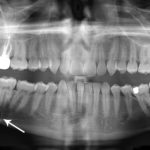
The odontogenic keratocyst (OKC) was reclassified in 2005 hours as a benign neoplasm, and renamed the keratocystic odontogenic tumour (KCOT). In 2017 the KCOT was placed back in the cyst category. There is currently No consensus concerning Best management of 0KC and a wide range of treatment options have been reported including enucleation alone, enucleation with curettage, enucleation with adjunctive therapy (Carnoy’s solution, cryotherapy, and peripheral ostectomy), marsupialisation or decompression with or without secondary cystectomy and adjunctive therapy, and resection.
The main aim of this review it Is to compare conservative surgical treatments for nonsyndromic odontogenic keratocysts (OKCs) and assesses the recurrence rates through a meta-analysis, in order to indicate the best conservative approach.
Methods
Searches were conducted in the PubMed/Medline, Science Direct, Web of Science and the Cochrane library. English language studies; clinical trials, controlled trials, retrospective studies, and case-series with at least 10 cases of conservative surgical treatments for OKC were considered. Two reviewers independently selected studies, abstracted data and assessed study quality using the methodological index for non-randomised studies (MINORS) and the Newcastle Ottawa assessment scale (NOS).
Results
- 29 studies (25 retrospective, 1 cohort, 3 case series) were included
- Study quality was considered to be good.
- 1900 OKCs were reported (1321 managed conservatively, 579 more aggressive management)
- Of the 1321 OKCs managed conservatively 261 cases (19.8%; 95% CI = 17.6 to 21.9%) resulted in recurrence.
| Treatment | Number (%) cases | Recurrence rates (95%C!s ) |
| Decompression and enucleation | 101 (7.7%) | 11.9% (95%CI; 5.6 to 18.2%) |
| Marsupialization and enucleation | 45 (3.4%) | 17.8% (95%CI; 6.6 to 28.9%) |
| Enucleation alone | 1049 (79.4%) | 20.8% (95%CI;18.3 to 23.2%) |
| decompression alone | 27 (2.0%) | 18.5% (95% CI = 8.2 to 28.9%) |
| marsupialization alone | 99 (7.5%) | 18.2% (95% CI = 10.6 to 25.8%) |
| Treatment | No of studies | Odds for recurrence compared to enucleation alone (95%CI) |
| Decompression and enucleation | 4 | 0.48 (0.22- 1.08) |
| Marsupialization and enucleation | 2 | 0.73 (0.22 – 2.42) |
| decompression alone | 2 | 1.30 (0.27- 6.34) |
| marsupialization alone | 4 | 1.57 (0.69 – 3.58) |
Conclusions
The authors concluded: –
The results suggest a significant superiority of success for OKC treatments that use decompression followed by enucleation, instead of an initial enucleation (M-H, OR = 0.48; 95% CI = 0.22 to 1.08; P = 0.0163).
Comments
The best management option for OKCs is one that continues to be a matter of debate. While this review focused on conservative management options previously we have considered systematic reviews don’t have looked more broadly then management. (Dental Elf- 1st Feb 2017) . Although this review has searched a wide variety of databases restricting the studies to English only means that relevant studies could have been excluded. A majority of the included studies are retrospective and while most have been assessed as good quality there is a greater risk of bias than with a prospective study. The recurrence rates for marsupialisation alone are lower than those seen in two previous systematic reviews (Dental Elf – 1st Feb. 2017).
All of systematic reviews carried out on this topic to date suffer from the low quality and retrospective nature of the studies available Consequently identifying the best treatment with the lowest recurrence rate needs can only be resolved by undertaking high-quality prospective studies preferably randomised controlled trials involving direct comparisons.
Links
Primary Paper
de Castro MS, Caixeta CA, de Carli ML, Ribeiro Júnior NV, Miyazawa M, Pereira AAC, Sperandio FF, Hanemann JAC. Conservative surgical treatments for nonsyndromic odontogenic keratocysts: a systematic review and meta-analysis. Clin Oral Investig. 2017 Dec 20. doi: 10.1007/s00784-017-2315-8. [Epub ahead of print] PubMed PMID: 29264656.
Other references
Original review protocol on PROSPERO
Dental Elf – 1st Feb 2017
Photo credits
- By Coronation Dental Specialty Group [1] [CC BY 3.0 ], via Wikimedia Commons
